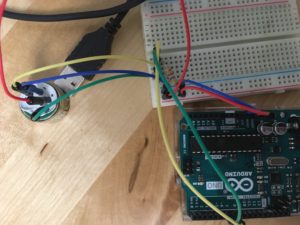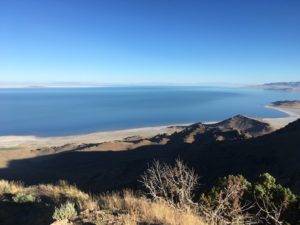This week was another exciting one for me. On Monday Lexie and I finally had the communication device that attaches to our temperature sensor communicating and sending its data over 800 feet. I am glad to see that our work on this project for the past two weeks has finally paid off. The next step of the project is to create a daisy chain of sensors to increase both the range and number of measurements of the sensor system. With our newly working sensor, we have been testing the range and observing how a line of sight or buildings affect the range and speed of the communication device. We also have been attempting to connect a Co2 sensor to our Arduino board, but this is much more complicated than the relatively simple temperature sensors.
In addition, we have been preparing for an experiment that will help Aaron better estimate the mass of Co2 leaving the vents on the top of the student union. For this experiment, we plan to place a Co2 tank on a scale and measure the decrease of mass of Co2 as Co2 is released from the tank. This Co2 will be released through a diffuser into the bottom of a bucket. Fans will be used to create turbulence in inside the bucket and this mixture of Co2 and air will exit the top of the bucket. We will then measure Co2 concentration and air velocities in different sections of the top of the bucket. These two values combined with the area of the top bucket being measured will allow us to estimate the volume of Co2 leaving the bucket. This value can then be compared to the volume of CO2 that has left the tank that is calculated through the density of Co2. Observing how close these values match will allow us to model how values should be adjusted for the large vent on the roof. For this vent, we only have Co2 concentrations and air velocities, and not the total mass of Co2 escaping the vent. Our experiment should help us better determine that.
We also worked more with Eric on rock mechanics this week. We received some of the data on experiments he already completed and got experience creating write-ups on the data. We have gotten experience calculating values based on experiments, in which rocks were placed under stress. For example, we can calculate the heterogeneity or homogeneity of a rock based on how a sample of the rock that is taken horizontally behaves under stress versus a sample of the same rock taken vertically. We also got experience calculating the Young’s Modulus value of a rock, which is a measure of its stiffness.
Outside of work I have continued to explore the Salt Lake area. Last Sunday I saw the bison on Antelope Island, and today I hiked Lone Peak. For the 4th of July, I met the Jansen’s in Park City and enjoyed the Fourth of July with them.



There are no comments published yet.